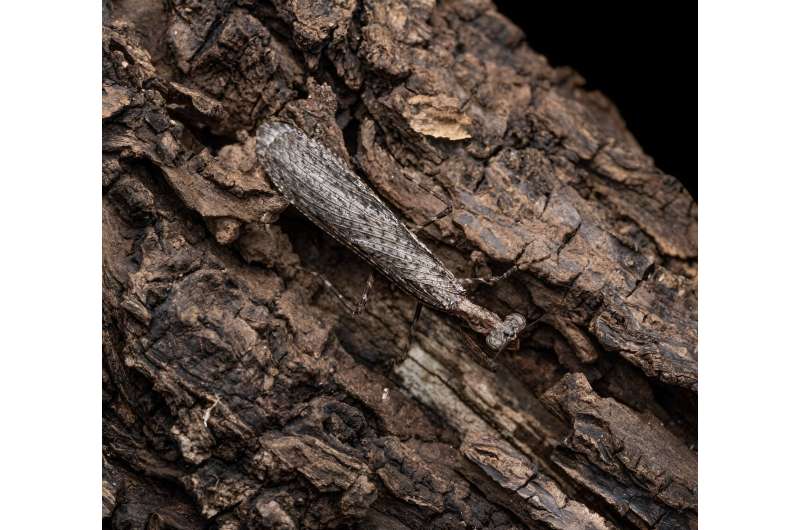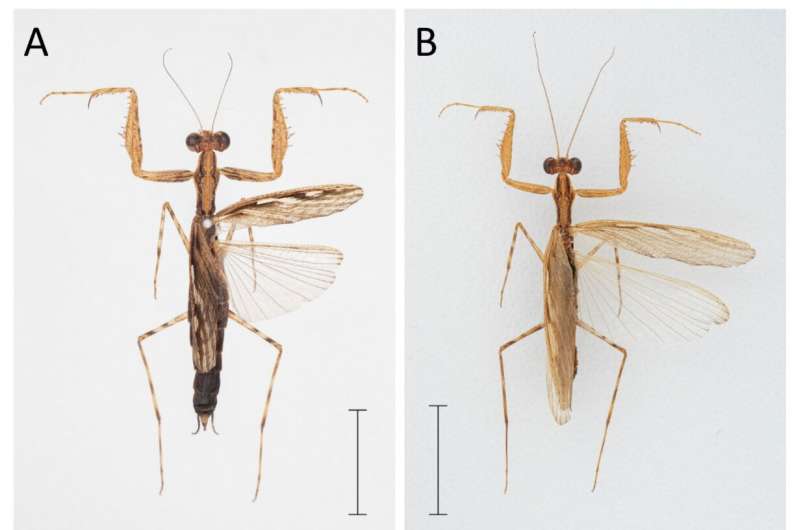This article has been reviewed according to Science X's editorial process and policies. Editors have highlighted the following attributes while ensuring the content's credibility:
fact-checked
peer-reviewed publication
trusted source
proofread
Citizen scientists help discover new mantis species

James Cook University researcher Matthew Connors has discovered two new praying mantis species with the help of citizen scientists. The finds have been published in Zootaxa.
One of these new mantises is not just a new species but an entirely new genus—the classification level above species—and was discovered thanks to citizen scientist Glenda Walter.
"We have named the new species Inimia nat—I. nat for short—as it was discovered thanks to the citizen science platform iNaturalist—also iNat for short.
"It's a tribute to a new way of doing natural science. With a far greater number of people able to survey a much broader span of both time and space, citizen scientists can provide a wealth of data that would not otherwise be feasible," said Connors.
He said if someone were to go outside and find three different insects, there's a good chance that at least one of them would be a new species.
"In fact, there are new species everywhere—here in Australia, it's estimated that less than a third of our species have been discovered and named. Scientists are hard at work documenting these organisms, but new research has shown that even amateur naturalists can help discover new species," said Connors.
He said the new mantis genus is the first of its subfamily to be named since before the moon landing, and it's the first new Australian mantis genus to be named since the new millennium.

A second new mantis, named Ima corymbia, was also discovered by Connors. Long considered the same as its sister species the Paperbark Mantis (Ima fusca), a detailed look at the body structures of the two instead revealed they were different species.
Observations from citizen scientists helped reveal details about where this new mantis lives and how it behaves.
Connors said the tyranny of time and distance is being bridged with the help of citizen scientists.
"Data that might take a researcher years or even decades to collect is instead being collected by amateur naturalists through citizen science programs. It's a wealth of information that we're only just beginning to tap into," said Connors.
"Citizen science is a fantastic way for anyone interested in nature to get out there and start making discoveries. There's just so much that we don't know that it's almost certain that citizen scientists will continue to discover countless new species."
More information: Matthew G. Connors et al, A revision of the genus Ima Tindale (Mantodea: Nanomantidae: Fulciniinae) with the description of a new genus, Zootaxa (2023). DOI: 10.11646/zootaxa.5380.3.1
Journal information: Zootaxa
Provided by James Cook University


















